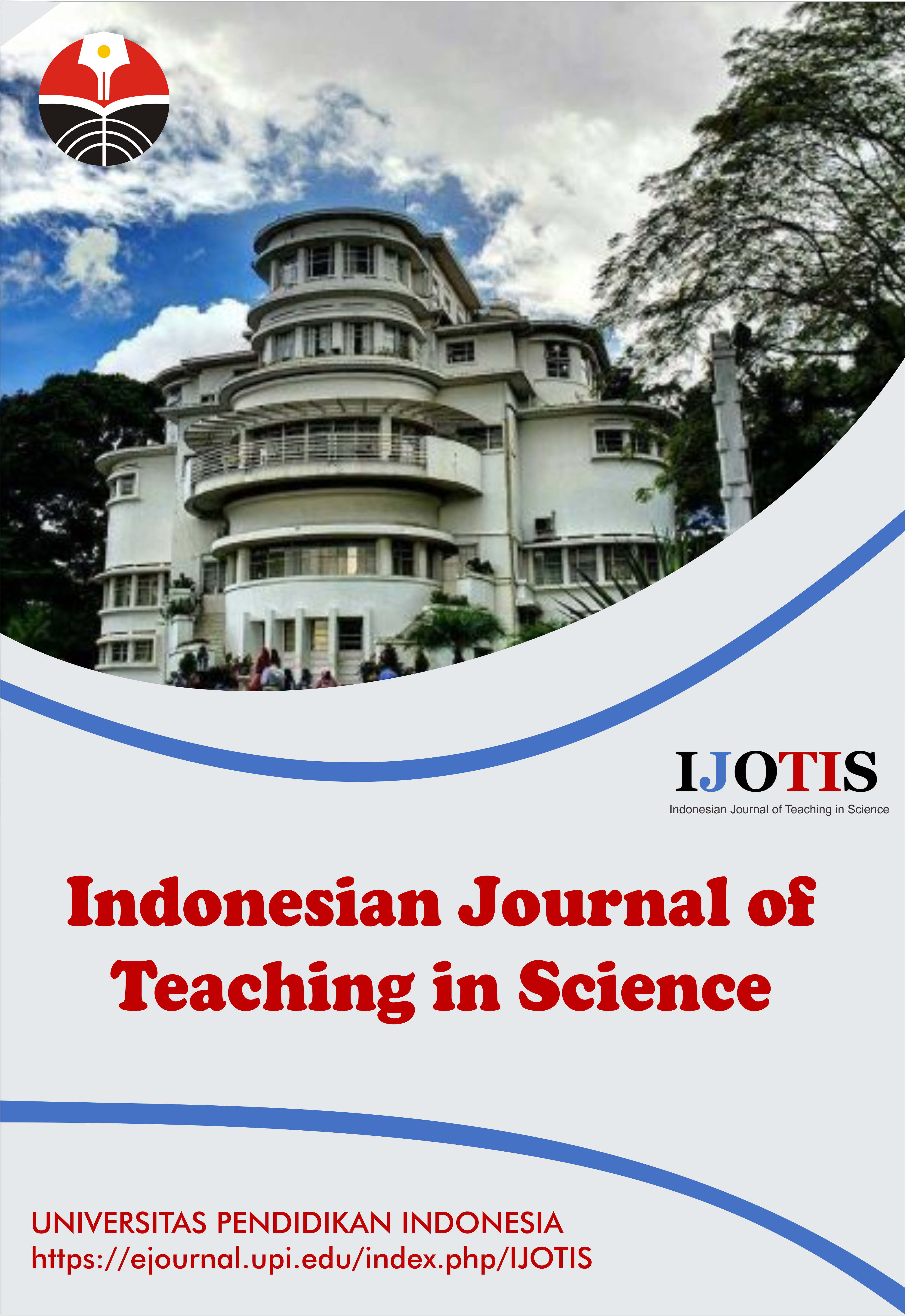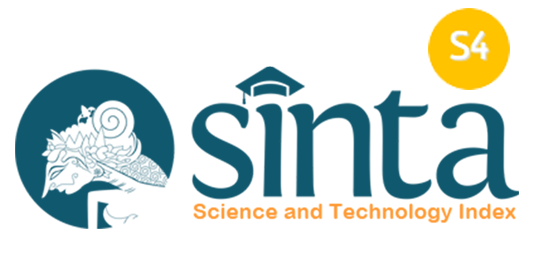Examining the Role of Biology Teachers' Beliefs, Motivations, and Self-Reported Practices in Constructing Curves for Biology Class
Abstract
Keywords
Full Text:
PDFReferences
Abe, C. N., and Adu, M. C. (2013). A trail of the five Es: A reference model for constructionist teaching and learning. Journal of Teacher Education, 64(5), 730 – 750.
Adnan, K., and Ahmet, Y. (2006). Representing visually. What Teachers Know and What They Prefer Science, 420(6034), 1113 – 1205.
Avalos, O. (2011). Testing models of socially desirable responding. International Journal of Science Education, 3(2), 1 – 11.
Bowen, W., and Roth, J. R. (2015). A comparison of exemplary biology, earth science teachers’ conceptions and enactment of inquiry. Science Education, 96(1), 48 – 77.
Darling, H. (2017). Challenges with curve interpretation: A review if the literature. Studies in Science Education, 47(2), 183 – 210.
Gardner, D, M., and Jones, L. (2011). Implication of research on teacher belief. Educational Psychologist, 13(8) 46 – 79
Gibbons, C., Kummel, F. N., and O’shea, T. (2007). Using multi – item psychometric scales for research and practice in human resource management. Human Resource Management, 57(3), 739 – 750.
Idris, J. F. (2008). Investigating gender differences in the science performance of students. International Journal of Science Education, 23(5), 469 – 486.
Jaynes, S. (2005). A revolution in one classroom. Education Evaluation and Policy Analysis, 12, 327 – 345.
Katelyn, P. (2021). Data and curve interpretation practices among preservice science teachers. Journal of Research in Science Teaching, 42(10), 1063 – 1088.
Keller, M. (2018). Technology as a tool in teaching quantitative biology at the secondary and undergraduate levels :A review. Letters in Biomathematics, 5(1), 30 – 48.
Kukuh, P., Muslim, A. J., and Leny, P. A. (2018). Addressing first and second barriers to change strategies for technology intergration. Educational Technology Research and Development, 47(4) 47 – 61.
Liedman, Z. (2011). A review of research on teacher beliefs and practices. Educational Research, 38(1) 47 – 65.
Lisa, S. K., Walter, J., and Catherine, D. (2019). Assessing and understanding line curve interpretations using a scoring rubic of organized cited factors. Journal of Science Teachers Education, 25(3) 333 – 354.
Liza, S. N. (2010). What a scientic knowledge? An introduction to contemporary epistemology of science. International Journal of Science Education, 42(1), 49 – 63.
Muhammad, C. J. (2017). ‘How many scientists does it take to have knowledge’? Journal of Research in Science Teaching, 14(2), 104 – 107.
Muijs, M. M., and Reynolds, H. (2015). Making sense of curves’ Critical factors influencing comprehension and instructional implications. Journal of Research in Mathematics Education, 32(2), 124 – 258.
Murdoch, S., and Wilson, V. R. (2008). The functions of multiple representations. Computer and Education, 33(2/3), 131 – 152.
Norman, L. A. (2019). Nestedness of beliefs : Examining a prospective elementary teachers’ belief system about science teaching and learning. Journal of Research in Science Teaching, 40(9), 835 – 868.
Okeke, A. (2000). An attitude survey towards intergrated science. A comparative case study of preservice teachers. Educational Technology Research and Development, 45(3/5), 140 – 152.
Onike, H. (2016). What do teachers believe? Developing a framework for examining beliefs about teachers’ knowledge and ability. Contemporary Educational Psychology, 33(2), 134 – 176.
Owolabi, A. (2003). Examining the beliefs of effective science teachers. Science Education, 4(23), 39 – 54.
Richardson, T. (2013). Social desirability and self – reports. Personality and Social Psychology Bulletin, 30(2), 161 – 172.
Shehu, J. L. (2015). Secondary teachers’ conceptual metaphors of teaching and learning : Changes over the career span. Teaching and Teacher Education, 25(5), 743 – 751.
Shulman, S. (2016). The material features of multiple representations and their cognitive and social affordances for science understanding. Learning and Instruction, 13(2), 205 – 206.
Taylor, P., and Francis, M. (2021). Constructing graphical representations : Middle schoolers’ intuitions and developing knowledge about slope and Y – intercept. School Science and Mathematics, 112(4), 230 – 240.
Tolvanen, Z., and Anunola, A. M. (2012). Interactive and scalable biology cloud experimentation for scientific inquiry and education. Nature Biotechnology, 34(12), 1293 – 1298.
Wesselink, S. M. (2017). Multimedia and understanding: Expert and novice responses to different representations of chemical phenomena. Journal of Research in Science Teaching, 34(9), 949 – 968.
DOI: https://doi.org/10.17509/ijotis.v4i1.60689
Refbacks
- There are currently no refbacks.
Copyright (c) 2023 Universitas Pendidikan Indonesia

This work is licensed under a Creative Commons Attribution-ShareAlike 4.0 International License.
Indonesian Journal of Teaching in Science (IJoTIS) is published by Universitas Pendidikan Indonesia (UPI)
 Indonesian Journal of Teaching in Science
Indonesian Journal of Teaching in Science



